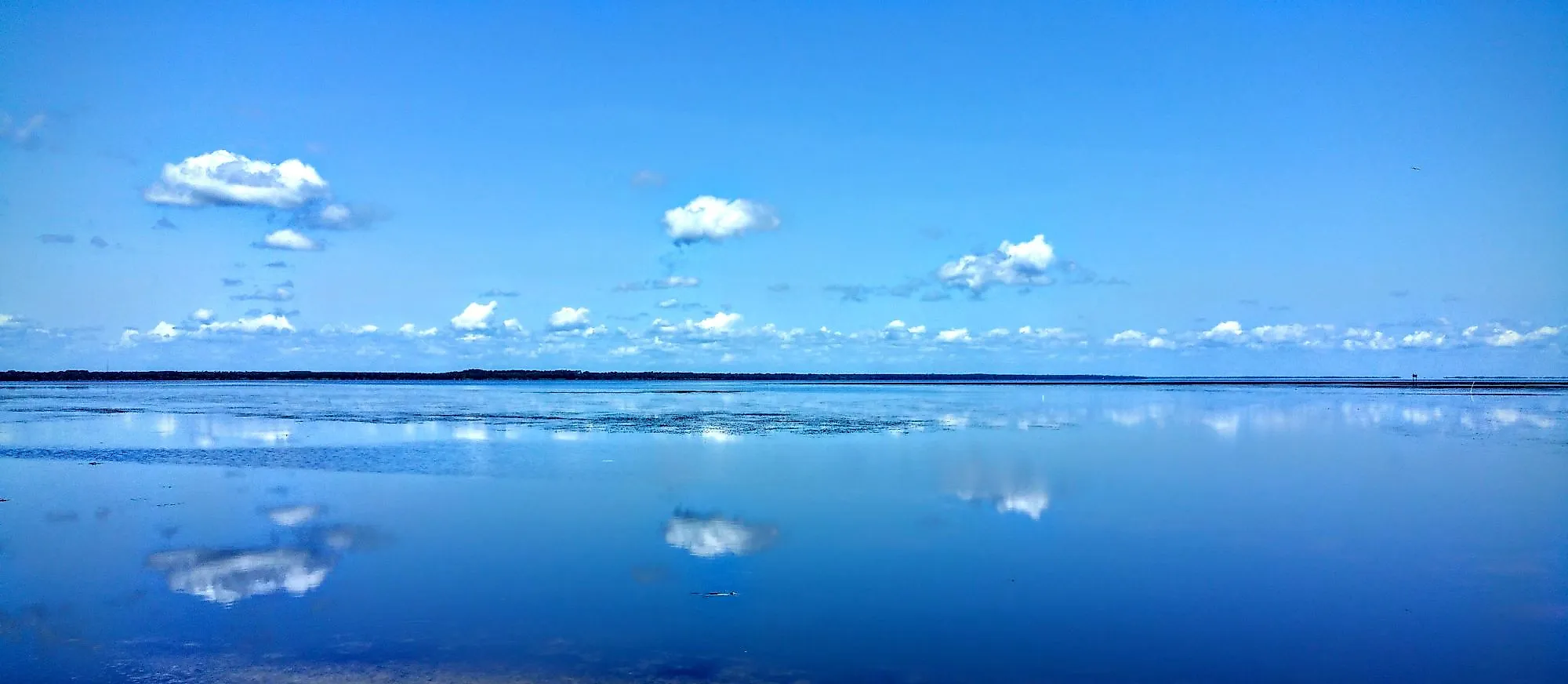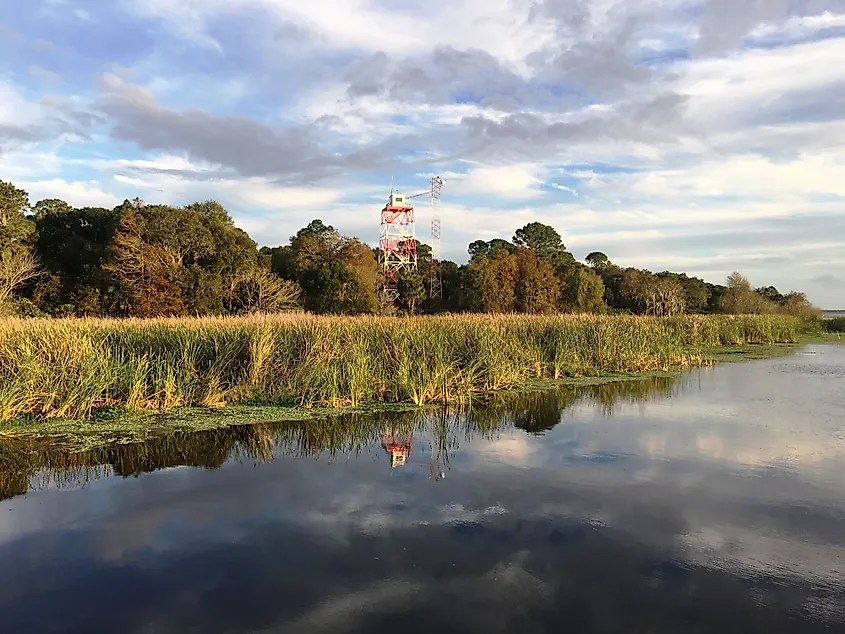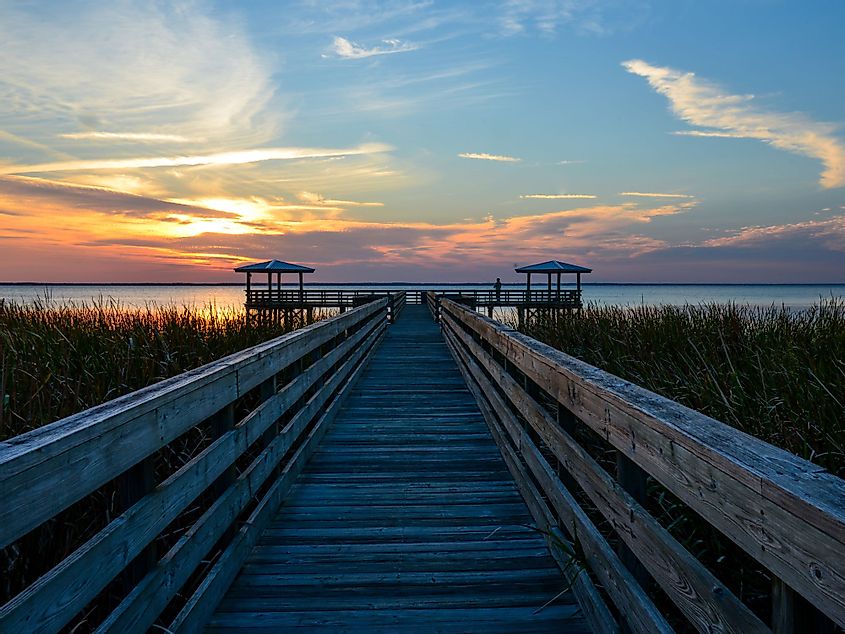
Lake George, Florida
Lake George is a brackish water lake situated on the St. Johns River and Ocala National Forest in the US State of Florida. Aside from Lake Okeechobee, it is the second-largest lake in Florida, with a surface area of 46,000 acres. Known for many recreational activities, this body of water also boasts a vibrant aquatic ecosystem. It is to be noted that Lake George is one of the world's only freshwater blue crab fisheries, and this is because of a healthy supply of saltwater to the lake that is attributed to local springs.
Geography Of Lake George

At 11 miles long and 6 miles wide, Lake George stretches across two counties: Volusia County and Putnam County. The main outflow of Lake George is the St. Johns River, which is on the northern side of the lake, near Rocky Point. The west side of the lake contains Salt Cove, where Salt Creek, one of the main inflow rivers, is located. Further, encompassing the west side of Lake George is the Ocala National Forest which contains some of the best campgrounds. Heading south is a popular stopping point for steamboats passing through from Jacksonville and ogle at the views of Lisk Point. On this lake's east side is a campground, RV park, and Lake George Fishing Pier. Lake George Wildlife Management Area can be found in the southern end. Other additional inflow rivers throughout George Lake include Juniper Creek and Silver Glen Springs.
History Of Lake George
Before the first settlers established permanent structures around Lake George, the land belonged to the Timucuan People and was formerly called Lake Welaka. Pedro Menendez de Aviles, a Spanish Governor of Florida, was the first settler to discover the area. He was known to have explored the area surrounding the St. Johns River in the Spring of 1596. However, Spain was forced to sell Florida to Britain in 1763. This set forth the royal botanist and explorer John Bartram to probe around the St. Johns River, naming the Lake after King George III in 1765. More recently, parts of Ocala National Forest were previously used for military operations, dating back to World War II. Ocala National Forest contained the US Navy’s Pinecastle Bombing Range within its confines, which used Lake George and Crescent Lake for target practice. Currently, these military operations no longer exist, and facilities have been relocated to Jacksonville.
Wildlife Of Lake George
Lake George supports foliage that is a blend of hardwood swamp and pine flat wood. Florida black bears, alligators, and bobcats should all be carefully monitored, particularly in the southern part of the lake. Wildlife enthusiasts might want to keep a lookout for southern fox squirrels, gopher tortoises, owls, otters, ospreys, and white-tailed deer.
Recreation Of Lake George

There are numerous campgrounds dotted throughout the entirety of Lake George and even the odd cabin. To the north, there is a tackle shop and golf course with marinas and boat launches, with an additional smaller boat launch to the east. Of the water-related activities, Lake George is popular for water-skiing, boating, canoeing, and kayaking. Being a saltwater lake and running at an average depth of eight feet, there are several fish species for angling. These include gar, bowfin, bass, chained pickerel, and catfish, to name a few. As for land-related activities, there are hiking trails about; with Ocala National Forest and Lake George Conservation Area containing many trails. Lake George is also a popular destination for hunting when regulations and seasonality permit it.
Lake George offers plenty of outdoor activities of various types that will surely please anyone among its miles of shoreline. It grants one the opportunity to escape into nature without being too far away from urbanization. With the options of stopping at Ocala National Forest, Lake George Conservation, or Lake George Wildlife Management Area, the ability to get close to wildlife is seemingly endless.











